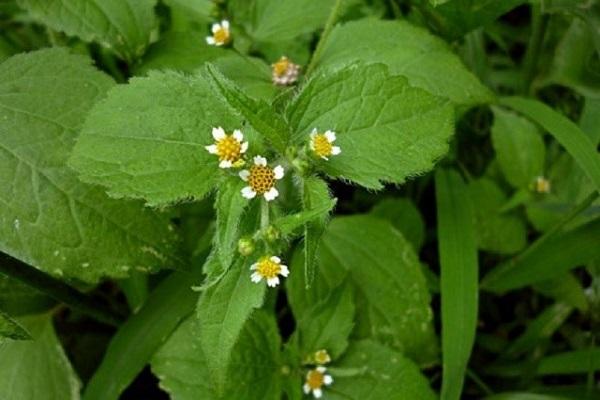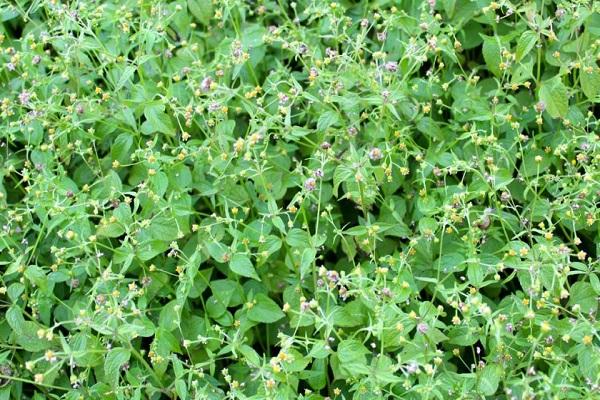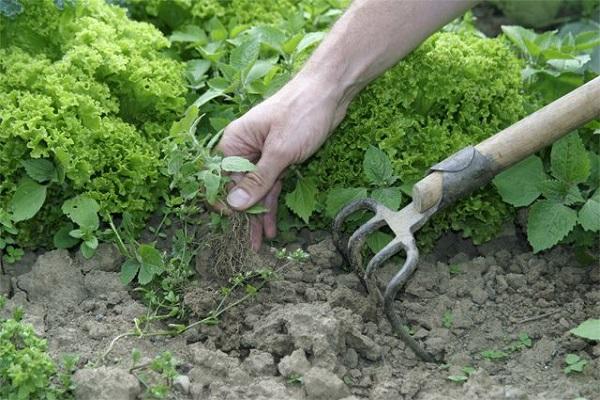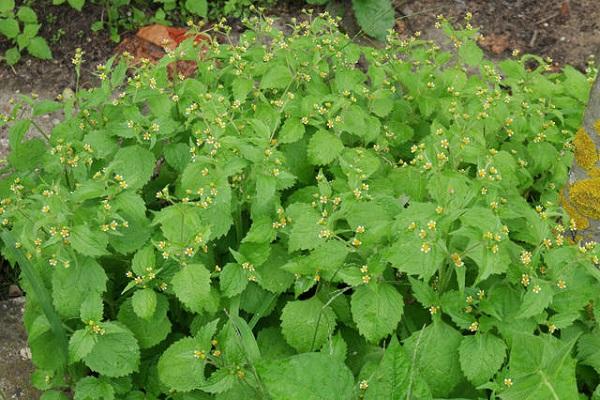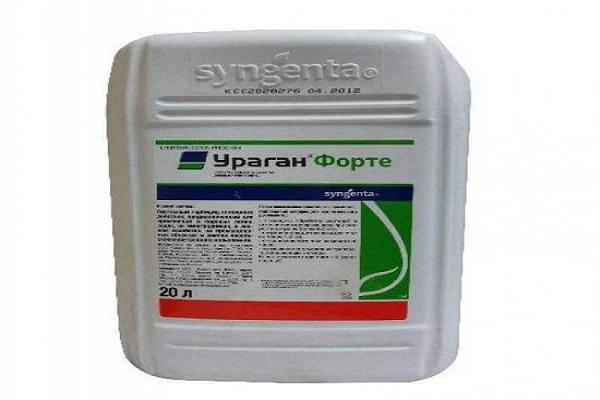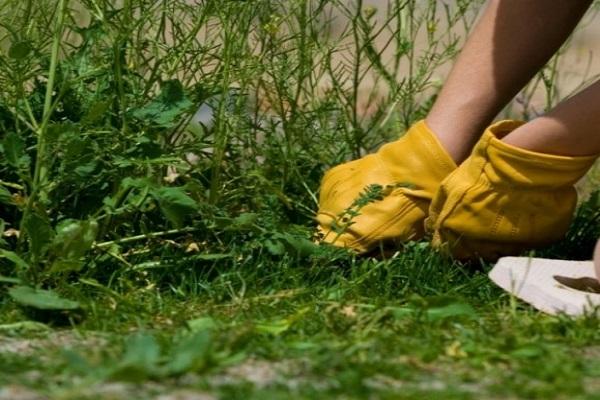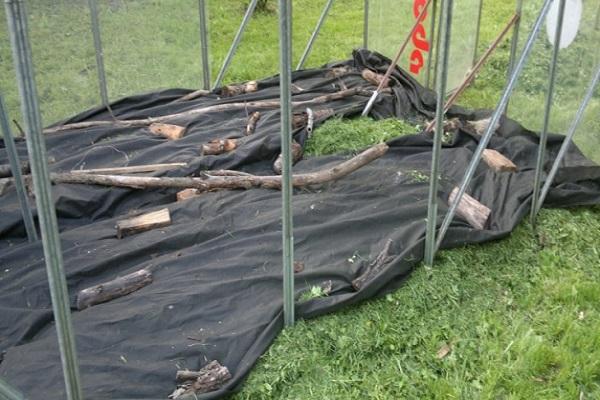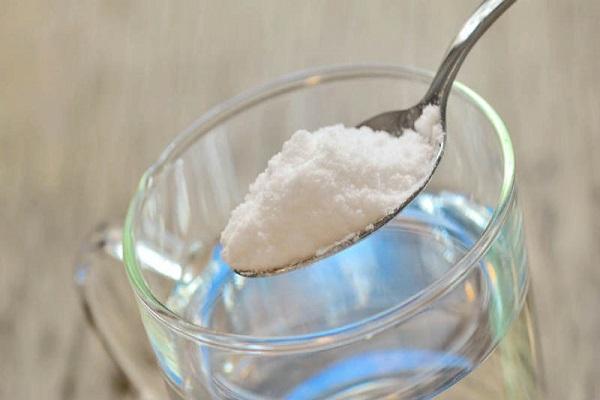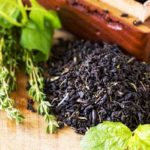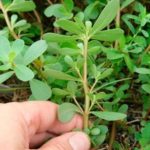American weed, or Galinsoga, is one of the fast-growing and easily adaptable herbs that can fill a summer cottage in a short period of time. This plant appeared in Russia after large-scale imports of seed material from abroad began. To find ways to prevent the development of the American weed and understand how to deal with the grass, it is necessary to determine the characteristics of Galinsoga.
What does an American look like?
Without human intervention, Galinsoga grows to a relatively large size.
This weed has the following characteristics:
- height - up to 80 centimeters;
- light green or light green leaves up to 6 centimeters long;
- succulent shoots;
- the edges of the leaves are jagged, the surface is wrinkled;
- the flowers are small, with a bright yellow center (reminiscent of small daisies).
The American is distinguished by her active development. This is due to the fact that one weed bush can produce up to 20 thousand seeds per season.
The root system of the grass is extensive and grows to a depth of 10 centimeters. The plant can adapt to different soils, but prefers well-fertilized and moist soils.
Features of reproduction
Three factors influence the reproductive ability of an American woman:
- degree of soil moisture;
- seeding depth (seeds do not penetrate a soil layer of more than 2 centimeters);
- watering frequency.
On average, out of 20 thousand seeds, no more than half remain viable. Moreover, each grain retains the ability to germinate for 10 years. In addition, the American plant itself produces many shoots, which quickly take root when in contact with the ground.
Because of these features, the weed is able to fill a summer cottage plot in 1-2 seasons.
Difficulties in weed control
In addition to active development, the American weed creates other difficulties for gardeners:
- grass can grow in both sunny and shaded areas;
- the weed has no natural pests;
- American is not susceptible to common plant diseases;
- with a sufficient level of humidity, the grass is able to produce seeds after weeding;
- seeds remain viable after passing through the gastrointestinal tract of animals and birds;
- after mowing, the plant remains viable.
The American plant can be destroyed using herbicides during the flowering period. Treating the area with chemicals in early spring does not bring a positive result: the weed will produce seeds from May to June.
Weed damage
American grass is characterized by rapid development, and therefore this grass can suppress the growth of other crops grown on the site within a season. This circumstance carries another danger: due to its active growth, the weed creates a shadow, interfering with the growth of neighboring plants. As a result, crops receive insufficient light and moisture and dry out over time.
The second danger of the American woman lies in the fact that the weed is capable of transmitting infectious diseases. This grass is chosen as a place for development by many insects that harm the development of garden crops. In addition, the American plant is capable of cross-pollinating with other plants (mainly grains and cruciferous plants), worsening the varietal qualities of the latter.
Due to the growth of this weed on the site, gardeners lose up to 25-50% of the harvest. However, the American also has a number of positive qualities. The herb contains several useful microelements that are used in the treatment of respiratory diseases and gastrointestinal pathologies, diabetes mellitus, and dropsy.
How to get rid of a pest plant in the garden
Due to the fact that American weed is characterized by increased vitality, it is recommended to combat this weed in a comprehensive manner, using different approaches. Moreover, this must be done during the growing season, trying to destroy the roots.
Herbicides
Herbicides are rarely used against American grass. This is due to the fact that the weed quickly adapts to these substances, especially if the area is treated more than once per season.This impact negatively affects the condition of the soil and, as a consequence, the yield of fruit and vegetable crops.
It is recommended to use herbicides if the weed has occupied a small area. Treatment with these substances should be carried out during the flowering period. In the fight against weeds the following is used:
- Hurricane forte;
- Roundup;
- Tornado.
Also, herbicides give a positive result when applied in the fall, when the crops have flowered and produced a harvest. It should be borne in mind that these substances do not have a noticeable effect on American seeds. Therefore, next year the site will have to be re-processed.
Green manure
Green manure is used mainly to prevent the appearance of weeds. It is recommended to sow empty areas on the site with these plants after harvesting. In summer, oilseed turnips, mustard or rapeseed are grown in such places. Before winter it is recommended to sow grain crops. The use of green manure also has another positive effect: after planting, the soil remains loose, due to which the crops planted next year will receive more oxygen.
At the same time, gardeners insist on the need to cut such plants. Otherwise, green manure will become weeds in the future.
Mechanical method
The mechanical method is more efficient. This method of fighting an American woman gives good results if the following rules are followed:
- The area should be weeded to remove weeds before flowering begins. This will take no more than 2-3 weeks.
- If the weed appears in a bed where there are no cultivated plants, the American plant should be dug up. This method is more effective than weeding, since after pulling out the grass, roots may remain in the ground.
- Weeds should not be left between rows of beds and should not be used as mulch.
- The beds should be weeded in dry weather.
Also, in the fight against weeds, deep cultivation of a summer cottage is used, which is carried out twice a year.
Mulching
Mulching gives positive results throughout the warm period of the year. For this, sawdust, straw, peat or tree bark are used.
Using film
The film is used as a budget replacement for mulching. This option for weed control is also considered effective, since the material does not allow sunlight to pass through and suppresses the development of grass. The disadvantage of this method is that pests often accumulate under the film and damage crop plants.
Folk remedies
A mixture consisting of the following components helps in the fight against the American:
- a few drops of dishwashing detergent;
- a tablespoon of salt;
- liter of 9 percent vinegar.
The resulting mixture must be treated with weeds, trying not to get on crops. It is recommended to carry out the procedure on a dry and sunny day, in the morning. Treating weeds with a solution of copper sulfate has a similar effect.
This control method is used mainly in cases where there is not enough time to weed and mulch the area. It is difficult to avoid contact of the described solutions with crop plants. And this can lead to a decrease in yield.
In the fight against weeds, sowing lawn grass next to the American plant has proven itself. A positive effect is also observed if fast-growing annual flowers are planted in areas where weeds may appear: petunia, nasturtium and others.
Preventive actions
In order to prevent the appearance of weeds on the site, it is recommended:
- carry out deep cultivation regularly (after harvest and in early spring);
- sow free areas on the site with lawn grass or flowers;
- during the summer, sow green manure in free areas;
- After visiting areas where American grass grows, you should rinse your shoes under running water.
As already noted, the American woman is distinguished by increased vitality. Therefore, this weed should be combated immediately after the first plants appear on the site.

